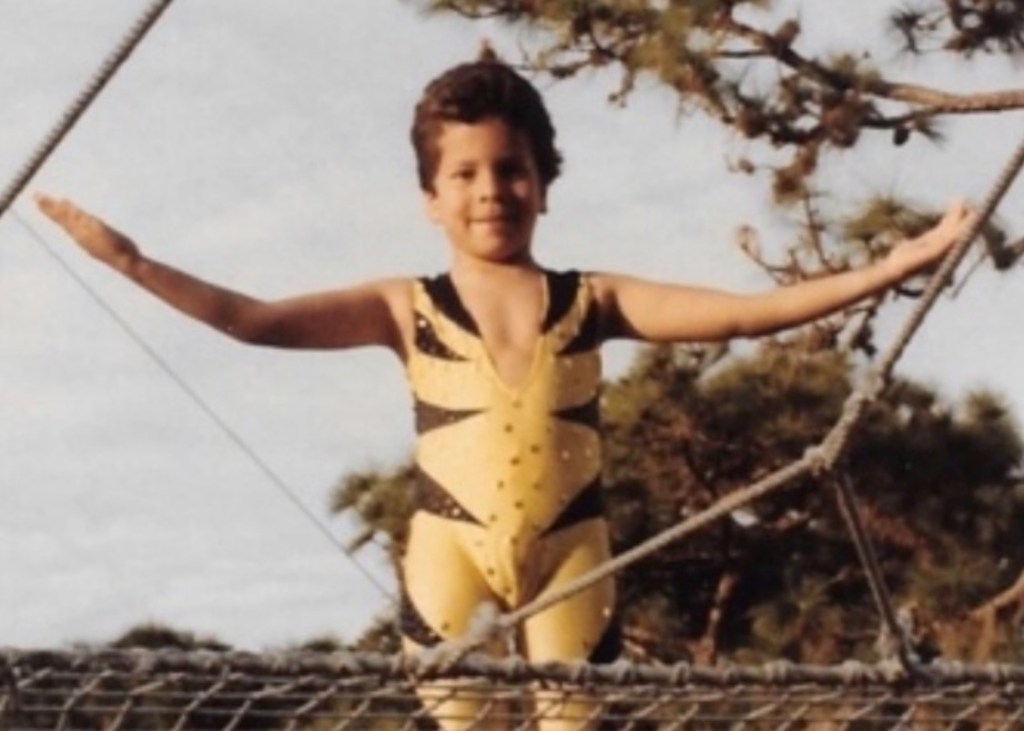
Later this year, audiences around the country will get to see George Caceres fly through the air again when the Ringling Bros. and Barnum & Bailey circus returns with a new show.
Caceres, 45, is an aerial trapeze performer and the troupe leader of The Flying Caceres, a group his father created in 1982 for previous iterations of Ringling Bros. and Barnum & Bailey shows. Based in Florida, Caceres is known as the first flyer ever to perform both a triple and a triple-and-a-half somersault in the same act.
When his father retired in 2006, Caceres took over this uncommon family business and today is helping coordinate and choreograph the next era of jaw-dropping spectacles that will excite and awe audiences. Here’s a look at how he makes this unique career path work for him.
This conversation has been edited and condensed for clarity.
Some people run away to the circus, but for you, it’s home. What is it like to have a job that's also sort of a family legacy?
It was always my dream as a child to work at The Greatest Show on Earth. My father worked here in the late 70s, early 80s, and I always wanted to follow in his footsteps.
My father did actually run away to the circus. He’s the cliché. He was born in Columbia, South America, and a circus played in his little town. It really captivated him—they had flying trapeze there. At first, he worked as someone who helped set up and take the show as it traveled. Later on, he convinced the people that if he set up all their equipment, they could let him try the trapeze. So he ended up doing most of the work in exchange for training. Thanks to that, I'm here now.

You started training on the flying trapeze really young. But how do you sustain that childhood joy and passion and turn it into a career?
I was about 5 years old when I started to practice some trapeze. But there was no joy at the beginning. When you’re that young, you don’t truly know what’s going on around you. I could have done something else, could’ve taken a different path. This is the path I chose, but I consciously chose that later in life. I love what I do.
It's not a highly lucrative profession. [Editor’s note: The average salary in the U.S. for a trapeze performer is roughly $39,000.] Nothing really in the circus is. It comes from the heart, it really is an artistic choice. When people pay to sit down and watch a show at the circus, at Ringling, the performers are really doing it for you, for the kids and their smiles.
I love matinee shows because the kids are so stoked to be there. They're the best audience. You're like superheroes. Spiderman's on TV, but actually seeing somebody flying from one side of an arena to the other in real life, it's really, really special. And if you miss, the kids love it. If you don't miss, they love it. They're just happy to be there.
How do people typically get into a career as a trapeze performer?
It's changed. When I was learning, there were very few schools that taught trapeze. Some of the first schools were in Canada. Now, there are actually more schools around the world that teach trapeze than there are actually shows. They're everywhere. You throw a rock, you're gonna hit somebody just out of school.
What you really need is just to apply yourself. You don't need a degree or anything. Just be brave and put in the work. Because it is hard. You're gonna feel like quitting many, many times before you get to that point where like, well, I'm good at this. You're not going to be for a really long time. So don't quit.
What does a typical day look like for you?
It's just like anyone else at first: I wake up, I have coffee. If it's a Saturday—most circuses have three shows on Saturday—I have to wake up a little bit earlier than normal. To do a show in the morning requires extra planning. You have to stretch and warm up more than usual. Believe it or not, if you do this later on in the day, it's a couple of degrees easier.
First of all, you need to be awake., so you can't just roll out of bed. So you need to wake up, walk around, talk, and try to stretch. To do flying trapeze, you also need strength. You need to eat too, but not too much because then you don't feel well.
Typically I do the first show, then I have the afternoon off. Really, it's just like anyone else—I suppose I could do whatever. But of course you can’t consume alcohol. Then you go back for the later shows. After the shows, I perhaps have a bad habit as a performer—and this is probably not just true for circus performers—of eating late. There's always some activity after the show, so usually around 10 p.m. or 11 p.m., I have a meal. It’s really when you shouldn't be eating, but you're hungry because you've just worked all day.

You typically perform in a troupe—does that take being coworkers to a whole new level?
We depend on one another and not just in a clerical way, but in a very physical way. We're doing this at 40 feet above the floor. It's not like you're playing basketball; this is different. We're talking about lives. So there is a tighter bond there. There is a more unusual dynamic there than there is in the office, for sure.
There is a trust course, and they have to earn that trust. They can't break that trust. If someone shows up to work hungover, for example, that's bad.
The performers in the upcoming show are from different cultures. We have performers from Chile, Ecuador, America, France, and Brazil. So you don't necessarily speak exactly the same language. But we're gonna get together late spring or early summer and start putting the pieces of the show together. It's gonna take some trial and error to figure it out.
What’s it like living on the road as the circus tours? Are there things you’ve learned that make it easier?
Coffee? This is gonna be a new experience for me. Even though I've been in the game for a long time, I haven't done the plane thing. I haven't lived in a hotel room. Now that The Greatest Show On Earth is out of the train, it's also going to be a new experience for me. [Editor’s note: Historically, Ringling Bros. and Barnum & Bailey Circus maintained train-based circus shows that traveled from venue to venue.]
How do you balance the health and athleticism required by this type of job?
I can no longer eat a pizza right before I go up. When you're 13, you could. It's true, you do have to take care of yourself a little bit better. I noticed that my body doesn't react as well to certain things or certain behaviors I had in the past and I've had to cut back or change. It's only normal, I suppose. Any job with any kind of physicality is probably like that—your body changes and you have to change what you put in it. I still enjoy everything, I just maybe enjoy it with more moderation.
What are the biggest misconceptions you run across being a trapeze performer?
There's a couple. High wire is not the same as flying trapeze or vice versa. They are separate disciplines.
It's also not like the cartoons; you don't spin as many times as possible before someone catches you. I wish it was that easy. Everything on the trapeze has to be highly, highly trained, highly choreographed. Doing half a somersault more requires six months more training. It's incredible how misrepresented that aspect of it really is.
It looks easy. I've actually been told that to my face: What you do is easy. Because I make it look easy. But it’s not. That's where the training comes in. You do something so many times that you finesse it to a point where it really looks effortless. It takes many years of training. I know it looks sometimes easy, but that's the game, that's where the training comes in—to make it look, you know, fly.
You’re hard at work planning this latest act for Ringling, but where do you think you’ll be in five or 10 years?
That's the ultimate question, right? What do you want to do when you grow up? I’d like to be involved, in some capacity, at The Greatest Show on Earth hopefully. If not, the circus world is a big world and we'll see. Ten years [is] still quite a ways off.







